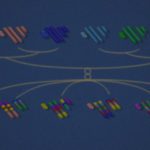Link to Pubmed [PMID] – 28934426
J. Infect. Dis. 2017 Sep;216(6):761-770
Background: Susceptibility to infection is in part genetically driven, and C57BL/6 mice resist various pathogens through the proinflammatory response of their M1 macrophages (MPs). However, they are susceptible to plague. It has been reported elsewhere that Mus spretus SEG mice resist plague and develop an immune response characterized by a strong recruitment of MPs.
Methods: The responses of C57BL/6 and SEG MPs exposed to Yersinia pestis in vitro were examined.
Results: SEG MPs exhibit a stronger bactericidal activity with higher nitric oxide production, a more proinflammatory polarized cytokine response, and a higher resistance to Y. pestis-induced apoptosis. This response was not specific to Y. pestis and involved a reduced sensitivity to M2 polarization/signal transducer and activator of transcription 6 activation and inhibition of caspase 8. The enhanced M1 profile was inducible in C57BL/6 MPs in vitro, and when transferred to susceptible C57BL/6 mice, these MPs significantly increased survival of bubonic plague.
Conclusions: MPs can develop an enhanced functional profile beyond the prototypic M1, characterized by an even more potent proinflammatory response coordinated with resistance to killing. This programming plays a key role in the plague-resistance phenotype and may be similarly significant in other highly lethal infections, suggesting that orienting the MP response may represent a new therapeutic approach.




